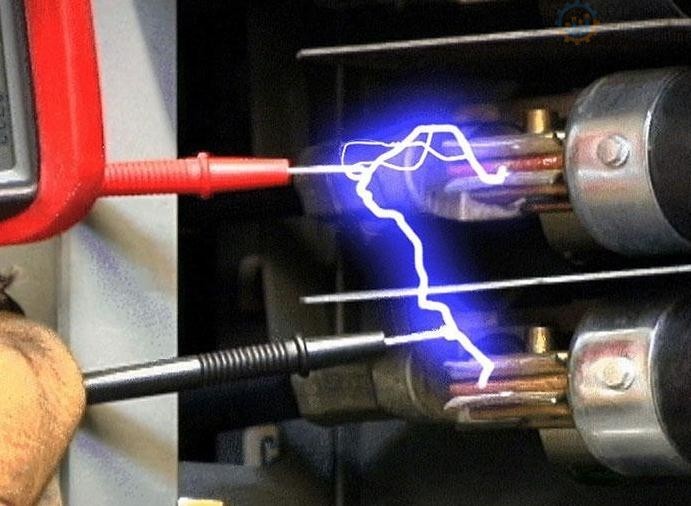I am new to the Forum and in training to take my Journeymen's test. I have a question about AFCi breakers in a panel. Lets say you are wiring 10 AFCI breakers in a new panel and the neutral from a different AFCI circuit got landed on the opposite AFCI. So #1 circuit neutral was landed on #2 circuit breaker and both are AFCI breakers. Would the AFCI automatically trip because the neutral isn't on the correct breaker for the circuit that's its supplying. Would anything happen at all? I hope that all makes sense. Thanks.
You are using an out of date browser. It may not display this or other websites correctly.
You should upgrade or use an alternative browser.
You should upgrade or use an alternative browser.
AFCI Breakers
- Thread starter JDG54
- Start date
- Status
- Not open for further replies.
- Location
- Illinois
- Occupation
- retired electrician
On the ones that still have ground fault protection in the device, it will trip as soon as you apply any load. Not sure what would happen in that case if the AFCI does not have GFP
Well, the AFCI breaker would be reading the difference between line and neutral. If you were to swap the neutrals and applied a load or created an arch fault condition between on circuit with L1 and N2, you may trip both AFCI breakers because your neutrals ultimately land on the same bar. You would have difference >30mA between L1 (fault to N2) and N1 (normal), and L2 (normal) and N2 (fault to L1). Not sure if they would see a difference before applying a load though. This was a head scratcher....
Take a look below...

Take a look below...

What are preferring to when you say ARC/Arch or Ark? Is that the type of AFCI. The most common type of AFCI Breaker I have been around are the Combination Type AFCI'S.A strictly arc (not arch or ark) fault breaker will not trip. But since most AFCIs have some GFCI protection built into them, then it would trip whenever a load is placed on the circuit.
- Location
- Chapel Hill, NC
- Occupation
- Retired Electrical Contractor
What are preferring to when you say ARC/Arch or Ark? Is that the type of AFCI. The most common type of AFCI Breaker I have been around are the Combination Type AFCI'S.
I believe he is correcting your use of the word arc and spelling it (arch) -- the correct word is arc
Yeah, me and my fat fingers and quick typing... oppsy.What are preferring to when you say ARC/Arch or Ark? Is that the type of AFCI. The most common type of AFCI Breaker I have been around are the Combination Type AFCI'S.
Could elaborate on how an arc fault would not be recognized either breakers? You have a fault between line and neutral... granted the fault is on a different line, there would be a difference between the L-N on each breaker, no? I'm curious... not arguing.A strictly arc (not arch or ark) fault breaker will not trip. But since most AFCIs have some GFCI protection built into them, then it would trip whenever a load is placed on the circuit.
What are preferring to when you say ARC/Arch or Ark? Is that the type of AFCI. The most common type of AFCI Breaker I have been around are the Combination Type AFCI'S.
Arch:

Ark:

Arc:

Could elaborate on how an arc fault would not be recognized either breakers? You have a fault between line and neutral... granted the fault is on a different line, there would be a difference between the L-N on each breaker, no? I'm curious... not arguing.
And arc fault will be detected by an AFCI. But a strictly AFCI only breaker will not sense swapped neutrals. There is no ground fault when the neutrals are swapped, so the circuitry sensing arc faults will not open the breaker.
Swapping the neutrals will cause most AFCI breakers to open because the GFCI protection that they have will sense a current difference and interpret that is a ground fault and hence open the breaker. There are a few brands of AFCI breakers that do not have some level of GFCI protection built into them, but I don't recall what they are offhand.
- Location
- Illinois
- Occupation
- retired electrician
At least two of the brands no longer have any GFP protection built in.A strictly arc (not arch or ark) fault breaker will not trip. But since most AFCIs have some GFCI protection built into them, then it would trip whenever a load is placed on the circuit.
All of the original branch circuit/feeder type AFCIs had GFP, typically set at about 30mA>
I believe when the combination type came out, all of them had GFP.
However now two brands have found a way to pass all of the tests required by the standard without have GFP. Originally adding the GFP was the only way they found to pass all of the requirements. Some how they found a way to pass the tests without the GFP.
It is my opinion that the product standard should require AFCIs to have GFP, as it is one of the most important parts of the AFCI device. In talking with a couple of engineers who are very knowledgeable on AFCI operation have said that the GFP really did most of the work as far as preventing fires.
I think you mean "An" no "And"And arc fault will be detected by an AFCI. But a strictly AFCI only breaker will not sense swapped neutrals. There is no ground fault when the neutrals are swapped, so the circuitry sensing arc faults will not open the breaker.
Swapping the neutrals will cause most AFCI breakers to open because the GFCI protection that they have will sense a current difference and interpret that is a ground fault and hence open the breaker. There are a few brands of AFCI breakers that do not have some level of GFCI protection built into them, but I don't recall what they are offhand.
At least two of the brands no longer have any GFP protection built in.
All of the original branch circuit/feeder type AFCIs had GFP, typically set at about 30mA>
I believe when the combination type came out, all of them had GFP.
However now two brands have found a way to pass all of the tests required by the standard without have GFP. Originally adding the GFP was the only way they found to pass all of the requirements. Some how they found a way to pass the tests without the GFP.
It is my opinion that the product standard should require AFCIs to have GFP, as it is one of the most important parts of the AFCI device. In talking with a couple of engineers who are very knowledgeable on AFCI operation have said that the GFP really did most of the work as far as preventing fires.
If I am understanding everything correctly. An AFCI breaker that has GFP protection built in would detect the swapped neutrals only if it had a load applied to the circuit. If its just a strait AFCI breaker with no GFP it will not detect the swapped Neutrals.
- Location
- Illinois
- Occupation
- retired electrician
If it does not have GFP, I don't think it has any way of knowing the neutrals are swapped.If I am understanding everything correctly. An AFCI breaker that has GFP protection built in would detect the swapped neutrals only if it had a load applied to the circuit. If its just a strait AFCI breaker with no GFP it will not detect the swapped Neutrals.
I think you mean "An" no "And"
. Ok, there was my fun payback for the day. But yes, I would agree if there is GFCI, but I am talking about when an ARC fault occurs. It is an AFCI breaker... so it should see the arc fault between line and neutral on both breakers.
Swapping neutrals does not create a ground fault.
hbiss
EC, New York NEC: 2017
- Location
- Little Falls, New York NEC: 2017
- Occupation
- EC
but I am talking about when an ARC fault occurs. It is an AFCI breaker... so it should see the arc fault between line and neutral on both breakers.
If it's a strictly AFCI breaker that does not have a ground fault function, it wouldn't matter where the neutral came from. It would still detect the arc (assuming that they even work).
Matter of fact, I believe the AFCI breakers that don't have GF only use the neutral pigtail to power it. If there is a lug for the load neutral it's only connected to the pigtail internally.
-Hal
I am not talking about ground fault.Swapping neutrals does not create a ground fault.
So you are saying the same thing I was stating in my first post to the OP.If it's a strictly AFCI breaker that does not have a ground fault function, it wouldn't matter where the neutral came from. It would still detect the arc (assuming that they even work).
Matter of fact, I believe the AFCI breakers that don't have GF only use the neutral pigtail to power it. If there is a lug for the load neutral it's only connected to the pigtail internally.
-Hal
rnatalie
Senior Member
- Location
- Catawba, NC
- Occupation
- Retired Electrical Engineer
Branch/Feeder and Combination AFCI's (the ones most common in residential use) have 30ma of ground fault detection in them. This is higher than the 5ma that GFCI protection mandates, but enough to trip if you an obvious fault (a hard connecdt from neutral to ground, or intertwining of circuits after the protector).
kwired
Electron manager
- Location
- NE Nebraska
- Occupation
- EC
Swapping neutrals does not create a ground fault.
GFP detection generally detects current flowing outside an intended pathway. Majority of time it will be to "ground" but does not need to be flowing to ground and would still trigger the detection method. 50 mA flowing from phase A to phase B of a different circuit for example is not a ground fault, but would still trigger a 30 mA GFP unit.
- Status
- Not open for further replies.

